At the turn of the 20th century, Novosibirsk, the third largest city in Russia, burst into being like a meteor. It was little more than a large village in 1897. The original town was to be near the projected new Trans-Siberian rail hub with an additional connection to the north-south Turkestan-Siberia Railway.
Novosibirsk became one of the first places across Russia to institute compulsory primary education. With the Bolshevik Revolution underway, the Red Army took the city in 1921. Twenty-three years later, Novosibirsk had a population of nearly 300,000. By 1962, despite WWII, Novosibirsk had reached one million citizens. At that time it was the youngest city in the world with over a million people. Today over 1.5 million citizens reside in this capital city. Being so far away from Moscow, there has always been a strong entrepreneurial base within the population.
Nonna Barkhatova, CCI’s Director for many years, is second from the right in the photo below. Nonna got her business degrees in England in the 90s. She returned home and created a dynamic business center to facilitate the development of regional entrepreneurism. Soon she learned about CCI and began lobbying to be part of our network of Russian cities from which we identified Russia’s young entrepreneurs who were struggling to create their first businesses. Nonna was persistent, sending us stories of her struggling business developers. Within a year we decided to partner with her business center. Nonna organized CCI’s September 2018 visit to her city.
CCI travelers, Jim Duree, Natasha Romanov and Bill Warrick had continuous meetings with Novosibirsk business owners, educators, students, farmers and one of Russia’s schools for child prodigies. In each place they had open-ended discussions on a range of topics from education to business, politics and culture.
Enjoy the write-ups and photos below. Before you start, try this very short and delightful YouTube: https://www.youtube.com/watch?v=N6l4DVG_REk&feature=yout
Day One: Novosibirsk Citizen Diplomacy Group: Akademgorodok
The day began with a meeting with the Director of a school that has gone from being one of the weakest schools in the region in 1992, to being one of the top 100 schools in Russia today. The Director described how they had improved the school through their numerous exchange programs. The group agreed that now, more than ever, it is important that people of all ages come and see Russia and Siberia. The school is open and ready to partner with any school in any country. They hope a delegation of American students would come to them!
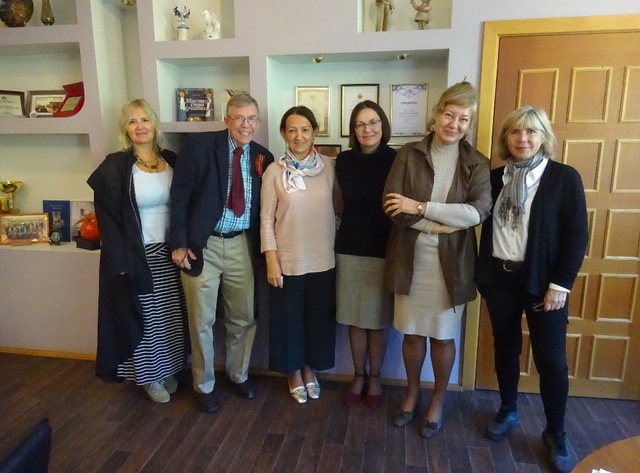
After a tour of the school, Natasha and Jim joined 10th graders for tea and discussion. The Americans explained what they consider a citizen diplomat to be and the students shared pictures of their recent exchanges and also their city landmarks. Natasha shared her teenage daughter’s Instagram, and Jim, with an avid interest in space, discovered that the dream of being a cosmonaut has disappeared in Russia; however, a strong interest in science continues for this generation.
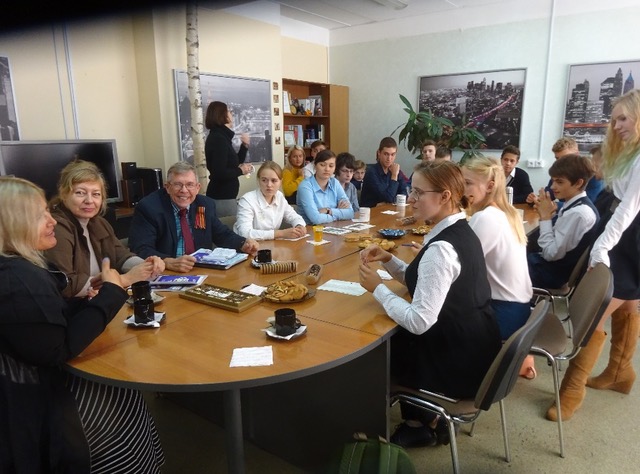
When the students were asked what they thought about the current relationship between the US/Canada and Russia, unfortunately they said, “It’s depressing.” Asked what they would like Americans and Canadians to know about Russians, they thought carefully and replied “that we are kind, open and ready for friendship.”
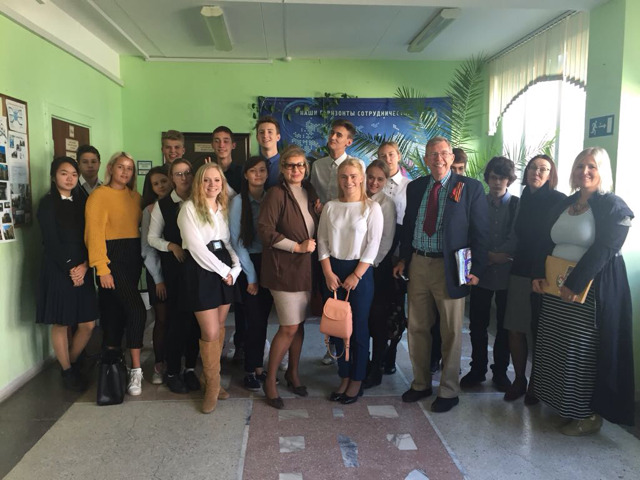
The rest of the day was spent out in the city meeting three extraordinary women: a successful IT entrepreneur, the director of a local private bank … and a Shaman! This ancient spiritual tradition is deeply imbedded in Siberia.
The next stop was a visit to Novosibirsk’s Technopark, the new IT center. There they had a meeting with the head of the local Association for IT Companies. She started her own programming company in 1991. Her company continues to flourish, creating everything from simulators for space station docking maneuvers to versions of a popular long distance truck driver computer game. She reported that more than 20 members of the Association are ready to do business with America and Canada. The visit ended with a tour of their “start-up incubator”. Technopark hosts a training program where young entrepreneurs can develop and present their start-up projects, much like Silicon Valley incubators. Selected projects receive office/work space for three years for $15 a month rent.
Their ‘next cup of tea’ was shared with the Director of a local private bank. She talked about the influence of the proposed sanctions on Russia. Her bank has adapted by expanding to other countries that are ready to do business with Russia in a range of currencies. To support this, they have hired Chinese native speakers and bought local banks in nearby countries. She acknowledged that working with local banks will be advantageous if the most severe “sanctions” are levied because U.S. sanctions are targeted at government banks. What was most striking to our American investigators was the calm, strategic attitude she had toward these new conditions. Obviously, she would prefer none of this to happen, but appeared confident that their bank won’t be destroyed, or even slowed down by this. They are adapting by looking for new opportunities and moving on.
The final stop in what turned out to be a 12-hour day, was a beautiful Shaman house on the top of a very steep hill. This area not so long ago was only aging sheds and small dacha gardens. Now it has turned into a neighborhood where local people build small homes where they can grow their own organic foods and enjoy their Shamanic practices. The Shaman community has created a lovely and peaceful environment for consultations about living a healthy lifestyle for modern-day Siberians.
Other Novosibirsk photos to enjoy …
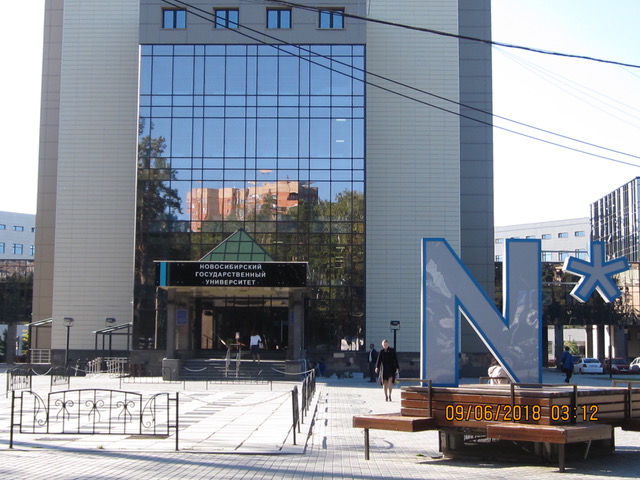
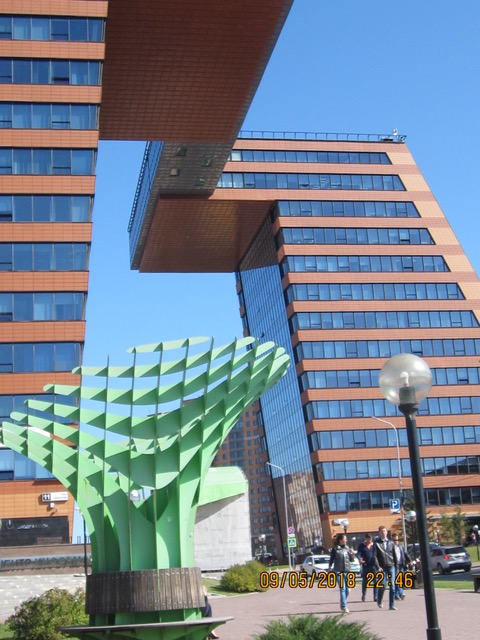
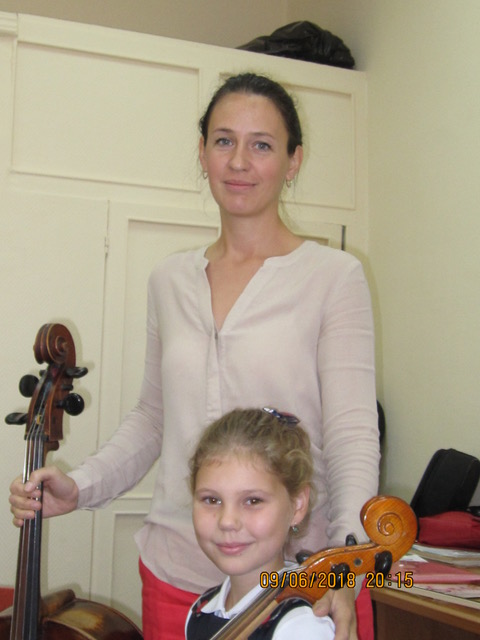
There are full-time academic and music schools in Russia where gifted children study and some live during the week. Our travelers were delighted with a tour of this Siberian school and had a short violin and cello concert.
Another such school is located in St. Petersburg where some of us walked in “off the street” without appointment. Shortly after our unplanned arrival, the director of the school came from her office and greeted us! We told her we knew of her school and would like to ask a few questions. The fairly young woman of about 40 years seemed delighted we were interested. Over the next hour she took us to several floors of the 200-year-old building which reeked with history. Full, life-size painted portraits of Tchiakovsky, Rachmaninoff, Borodin and many other Russian musical giants hung around the large performing hall. Students are schooled and housed in this three-story building.
We met young students coming out of their gym on the 3rd floor. They were racing each other down the halls, shrieking, darting around. Hard to imagine they were budding young musical geniuses. These and other special schools are free for Russian children. We spoke with a child from Texas (!?) whose tuition as a live-in student is $5,000 a year. Training in the arts is of the highest regard throughout Russia––prodigies are recognized early on. Parents and educators together determine how to best train these children’s talents to prepare them for both Russia and stages throughout the world.
